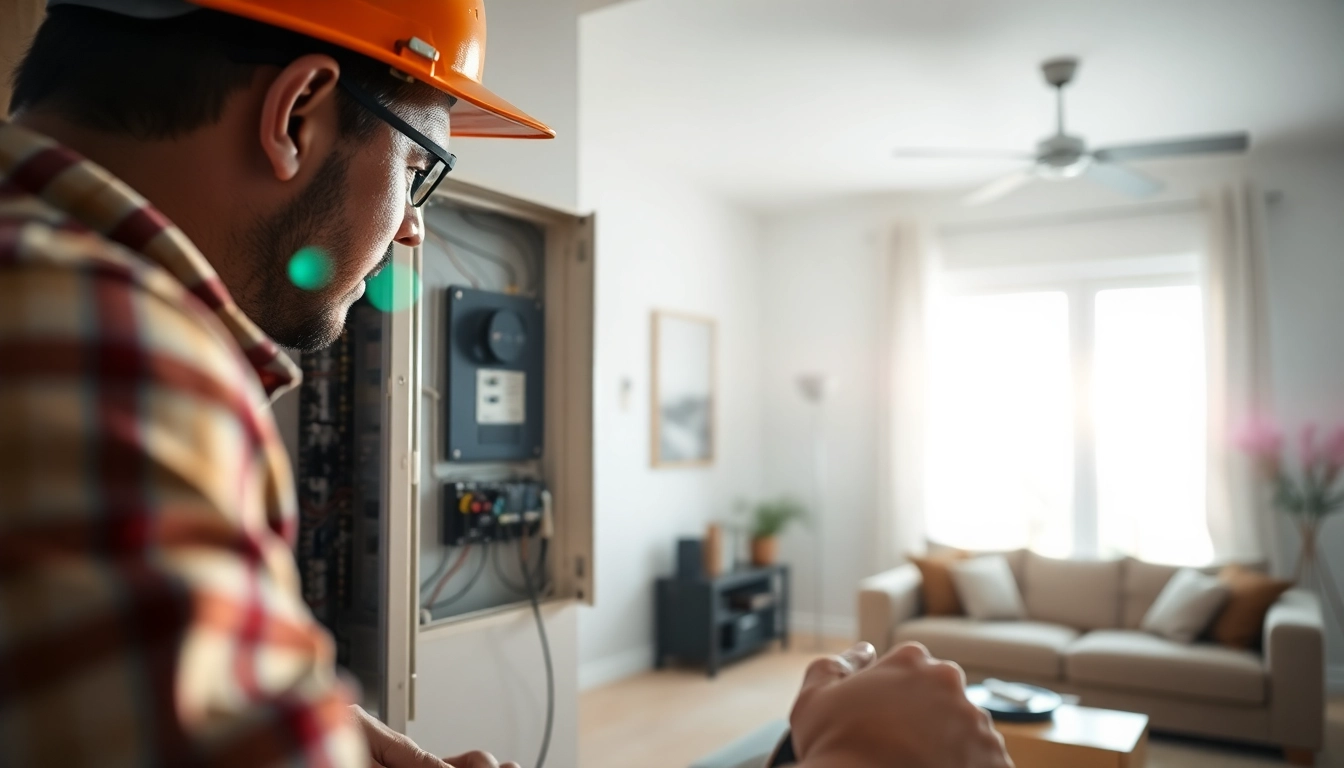1. What is an Electrical Panel Upgrade?
1.1 Definition and Purpose of Electrical Panels
An electrical panel, also known as a circuit breaker panel or distribution board, is the central hub of your home’s electrical system. It is responsible for receiving electricity from the utility provider and distributing it throughout the home via various circuits. The primary purpose of an electrical panel is to safeguard your electrical system and ensure that power is allocated properly to various appliances and fixtures, thus enabling safe and efficient electricity use.
1.2 Common Signs You Need an Upgrade
Recognizing when to upgrade your electrical panel can prevent safety hazards and improve your home’s energy efficiency. Here are some common signs indicating that it’s time for an electrical panel upgrade:
- Frequent Circuit Breaker Trips: If your circuit breakers trip frequently, it may mean your panel can’t handle the load.
- Flickering or Dimming Lights: Inconsistent voltage can cause lights to flicker or dim, suggesting an overload in the panel.
- Old or Outdated Panels: If your panel is more than 20 years old, it may not meet modern electricity demands.
- Burning Smells or Discoloration: Any burning smell or discoloration around the panel indicates potential electrical hazards.
- High Electricity Bills: An outdated or malfunctioning electrical panel can cause energy inefficiency, leading to higher bills.
1.3 Benefits of an Electrical Panel Upgrade
Upgrading your electrical panel can offer numerous benefits:
- Increased Capacity: Modern panels typically offer higher amperage levels (e.g., upgrading from a 100-amp to a 200-amp panel), allowing for more appliances and equipment to run simultaneously.
- Enhanced Safety: Newer panels feature updated safety mechanisms and are less likely to fail, significantly reducing the risk of electrical fires.
- Improved Functionality: Upgraded panels allow for the installation of smart home technology and other high-load appliances like electric vehicle chargers.
- Increased Home Value: A modern electrical system is appealing to potential home buyers and can increase your property’s resale value.
2. Factors Influencing Upgrade Costs
2.1 Average Pricing for Electrical Panel Upgrades
The cost of upgrading an electrical panel varies widely based on several factors, including the existing panel’s condition, geographic location, and required permits. As of 2023, the average cost for upgrading a residential electrical panel ranges from $800 to $4,000.
2.2 Cost Variables: Size, Type, and Scope
Several elements can influence the final cost of an electrical panel upgrade:
- Panel Size: Upgrading from 100 amps to 200 amps typically costs more than a simple panel replacement that remains the same size.
- Type of Panel: The cost varies based on the panel brand and features. Some brands offer advanced smart technology that can increase costs but provide enhanced functionality.
- Scope of Work: If additional wiring, conduit, or circuit breakers are necessary, these can significantly impact the total expense.
2.3 Financial Incentives and Rebates for Upgrades
Homeowners may be eligible for various tax credits and rebates related to electrical panel upgrades. Programs based on energy efficiency and installation of renewable energy systems are plentiful. For example, the Electrical Panel Upgrade tax credits may provide financial relief when you install energy-efficient appliances and systems during your upgrade process.
3. The Upgrade Process: Step-by-Step Guide
3.1 Preparing Your Home for the Upgrade
Preparation is crucial for a smooth upgrade process. Here’s how to facilitate the transition:
- Assess Your Current Electrical Load: Understanding how much power your home currently consumes will help determine the appropriate size for your new panel.
- Consult with an Electrician: Before making any decisions, get professional insight on your home’s electrical needs.
- Gather Necessary Permits: Check local regulations to ensure you have the correct permits in place before starting the work. This will help to avoid any legal issues or unexpected costs.
3.2 Hiring a Qualified Electrician
Selecting the right electrician is critical. When searching for a qualified professional:
- Check Credentials: Confirm that the electrician is licensed, insured, and has experience with residential electrical systems.
- Get Estimates: At least three quotes will help you understand the market price and confirm they are reasonable.
- Read Reviews: Research online reviews and ask for references to ensure you hire someone reputable.
3.3 Completing the Upgrade Safely
During the upgrade process, safety is paramount. Ensure the electrician follows these best practices:
- Isolate Power: The power supply must be turned off during the entire installation to maintain safety.
- Inspect Existing Wiring: Old or frayed wiring must be inspected and, if necessary, replaced to accommodate the new panel.
- Conduct Thorough Testing: After installation, the electrician should conduct rigorous testing to ensure that everything is functioning as intended.
4. Frequently Asked Questions about Panel Upgrades
4.1 Do I Need a Permit for an Electrical Panel Upgrade?
Yes, most municipalities require permits for any significant electrical work, including panel upgrades. Permitting helps ensure that the electrical work meets codes and safety standards, thus protecting your home from future hazards.
4.2 How Long Does an Upgrade Take?
The time required for an electrical panel upgrade can vary. Typically, the process can take anywhere from a few hours to a full day, depending on the complexity of the installation and any additional work required (e.g., upgrading wiring or circuits).
4.3 How to Choose the Right Panel Size?
The right panel size depends on your home’s needs. Consider your current and future electrical demands, including the number of high-energy appliances and the possibility of adding more over time. Consulting with a certified electrician will provide tailored recommendations based on your specific situation.
5. Maintaining Your Electrical System Post-Upgrade
5.1 Tips for Homeowners After Upgrading
Post-upgrade, it’s essential to familiarize yourself with the new panel and its capabilities:
- Label Breakers: Ensure all circuit breakers are labeled correctly to simplify any future troubleshooting.
- Monitor Electrical Load: Keep an eye on the power usage of devices and appliances to avoid overloading circuits.
- Consider Regular Inspections: Schedule routine electrical inspections every few years to catch any potential problems early.
5.2 Common Maintenance Issues to Watch For
Post-installation, be alert for these common issues:
- Corrosion: Monitor connections for signs of corrosion, which can lead to decreased performance or hazards.
- Overheating: If you notice excessive heat from circuit breakers or wiring, it may indicate a serious issue that needs immediate attention.
- Strange Noises: Buzzing or crackling sounds can indicate problems that need professional evaluation.
5.3 When to Consult a Professional Again
While proactive maintenance can help mitigate many issues, there are times when consulting a professional is essential:
- When Upgrading Appliances: If you plan to add high-load appliances, consult your electrician to ensure your system can handle the demand.
- After Major Storms: Severe weather can affect electrical systems; have a professional inspect your panel if you experience power surges or outages.
- When Experiencing Issues: Any signs of malfunction, such as flickering lights, frequent breaker trips, or unusual smells, warrant an immediate check by a professional.



